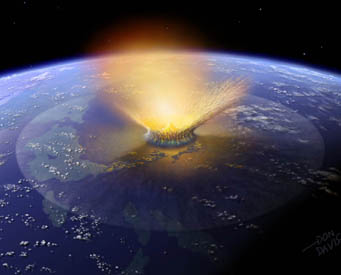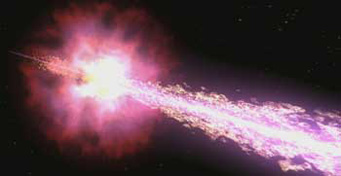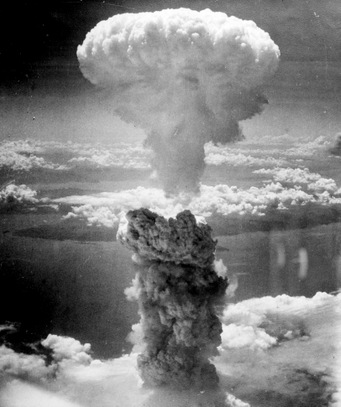Editor in Chief Robert Naeye goes out on a limb and predicts that the world will not end today. But with tongue in cheek, let's count the ways the world could end.
With all the hype about the world coming to an end, I thought it would be apropos to ask whether there are any forces that actually could bring the world to an end suddenly on December 21st.
First, let me be clear about one important thing: Despite claims to the contrary by doomsayers and charlatans, the ancient Mayan Long Count calendar does not predict the end of the world. After all, Western calendars don’t predict the end of the world on December 31st, or even at the end of a decade, century, or millennium. The Mayan calendar simply goes into a new cycle on December 22nd, just as Western calendars bring in a new year on January 1st. As S&T contributing editor Ed Krupp eloquently explains, the Mayans themselves predicted events (such as coronations of new kings) after December 21, 2012. If disaster strikes on December 21st, it won’t be because the Mayans predicted it.
But what could end the world on December 21st, or at least wreak mass devastation on a regional or global scale?
Asteroid Impact

A team of scientists propose that a large fragment from the Baptistina breakup eventually slammed into Earth 65 million years ago, triggering a global biological catastrophe. Fortunately, there’s zero chance of such an end-of-the-world asteroid impact tomorrow.
Don Davis
The only real astronomical disaster that could befall humanity tomorrow is the impact of an asteroid. I checked with planetary scientist and asteroid expert Dan Durda of the Southwest Research Institute in Boulder, Colorado, about this threat. Dan points out that any asteroid large enough to destroy civilization, such as the impactor that snuffed out all the dinosaur species (except birds) 65 million years ago, woud have been discovered weeks, months, or years earlier. So there’s zero chance of an end-of-the-world asteroid impact tomorrow.
I then asked Dan about smaller impactors, which are more difficult to find. One of these asteroids exploded in the atmosphere over the Tunguska River region of Siberia on June 30, 1908, flattening 800 square miles of forest. An asteroid of this size exploding over a city could kill a million people almost instantly. “It's plausible that we could have a Tunguska-size object sneak up on us,” he replied. “Don't forget, there are many instances of this sort of object being discovered only after its close approach with Earth.” Impactors of this size hit Earth about once every few centuries on average, but most of them will explode over the ocean or an uninhabited region. So the chances of an asteroid taking out a major city is extremely remote — they’re certainly not something that should cause you to lose sleep.
I sometimes worry about a Tunguska-size asteroid exploding over a nuclear power such as India or Pakistan, triggering an accidental nuclear war that could kill millions of people. This isn’t as crazy as it might seem. If the Tunguska blast had occurred in 1978 instead of 1908, the Soviet government might have mistaken it for an American nuclear first strike, prompting a retaliatory counterattack that might have ended civilization. Fortunately, the U.S. Air Force has satellites that will instantly recognize an incoming asteroid as being extraterrestrial in origin. If a large asteroid exploded anywhere in the world, the USAF will disseminate this information almost immediately, minimizing (although not completely eliminating) the risk of an accidental nuclear war.
Gamma-Ray Burst

This illustration depicts the two jets shooting outward from the center of a collapsing star. Collisions within the jet produce a gamma-ray burst (GRB). The probability of a GRB ending civilization is very low, since the kind of stars that produce GRBs are very rare in the Milky Way.
NASA / Swift / Cruz deWilde.
Doomsayers have sometimes touted other potential sources of astronomical disasters. The main culprits here are supernovae and gamma-ray bursts (GRBs). Fortunately, there are no stars that are about to go supernova within the danger zone (about 50 light-years). And recent research into the nature of stars that produce GRBs have shown that such stars are extremely rare or nonexistent in our Milky Way Galaxy. There’s a much higher probability that I’ll run a sub-2-hour marathon tomorrow than that a GRB will destroy Earth. And believe me, I have no plans to run a marathon tomorrow!
Natural Disasters
It’s certainly possible that a natural disaster emanating from within our own planet will strike civilization tomorrow, but there’s no known natural disaster will end the world. We certainly could have a catastrophic earthquake somewhere in the world, perhaps one that triggers a tsunami. Hundreds of thousands of people could die, but despite the tragedy, this would hardly be the end of the world.
What about a huge volcanic eruption, perhaps one from the Yellowstone supervolcano? Volcanoes can kill on massive scales, but they have one redeeming characteristic: they almost always give clear warning signs of impending eruptions (earthquakes, minor eruptions, gas releases, etc.). I have not heard of any news that any volcano near a populated area is about to unleash a major eruption. And there are certainly no signs of an impending eruption from Yellowstone or any other supervolcano.
The possibility of severe weather always looms over humanity, as we saw last month with Sandy. Such storms can cause widespread physical and economic devastation, but there are no weather events that can “end the world.”
Magnetic Reversal
What about a magnetic reversal? The last time the magnetic poles flipped polarity was 780,000 years ago, and it’s true that Earth is overdue for a reversal. But geologists think such reversals occur gradually, over tens or hundreds of years. It won’t happen over the course of a single day. If you’re still not reassured, consider the fact that Earth has experienced thousands of magnetic reversals during its history, but not a single reversal has been associated with a large extinction event. Our ancestors, Homo erectus, breezed through the previous reversal. A magnetic reversal would disrupt human civilization, but it would not threaten our species’ existence.
Thermonuclear War

Atomic bombing of Nagasaki on August 9, 1945.
National Archives image (208-N-43888)
The only possible calamity that could end the world tomorrow would be a thermonuclear war between the United States and Russia. Both nations are armed with thousands of hydrogen bombs, which can be fired from airplanes, intercontinental ballistic missiles, and submarines. A full-scale nuclear war would kill hundreds of millions of people in one day, and the resulting nuclear winter and spread of radiation would devastate the world’s ecology and agriculture, probably killing off most (but not all) of the world’s human population within a few years. The U.S. and Russia don’t exactly have cozy relations, and there’s always a small risk of an accidental trigger (see above), but it’s an extreme understatement to say that both nations have strong incentives to avoid such a catastrophe. The fact that the U.S. and the Soviet Union managed to avoid nuclear war during the Cold War gives me reason for optimism that it will never happen, and the odds of it happening on December 21st are vanishingly small.
So Will The World End?
So to summarize, I will make the following prediction with an extremely high level of confidence: the world will not end on December 21, 2012. My S&T Alan MacRobert can make another prediction with even greater confidence. As he points out, “Newspapers on December 22nd will be filled with news, some of it bad. And some believers are going to say, “Aha, that’s it. We knew it!”
 4
4
Comments
Doug Richards
December 21, 2012 at 7:56 pm
The "End of the World" article says that "any asteroid large enough to destroy civilization, such as the impactor that snuffed out all the dinosaur species (except birds) 65 million years ago, woud have been discovered weeks, months, or years earlier. "
It is true that we are tracking large asteroids, but what about the problem of comets which are not as predictable? For instance Hale-Bopp was discovered in 1995 and reached Perihelion about 2 years later. It was about 40 miles in diameter and far bigger than the one that killed the dinosaurs.
You must be logged in to post a comment.
Wim Stouwdam
December 22, 2012 at 3:11 am
What I have read is the sinking of Atlantis due to a magnetic reversal.
And what about the great flood they talk about in the Bible and other old books and manuscripts?
I am glad you agree that the Mayans never said that the world would end. It's just a shift of ages(into Aquarius).
When it comes to nuclear war I am convinced that Higher Powers will provent this from happening(as they did in the past).
You must be logged in to post a comment.
Peter
December 24, 2012 at 8:28 am
Comets do appear out-of-the-blue, but a direct hit on Earth is extremely unlikely. Compared to the size of its orbit, the Earth is a very small target. Most comets will pinball around the solar system for tens of thousands of years before striking another object, and most will hit Jupiter or Saturn when they do.
You must be logged in to post a comment.
Jack R.
January 2, 2013 at 2:27 pm
I pity those who actually thought anything was going to happen.
You must be logged in to post a comment.
You must be logged in to post a comment.